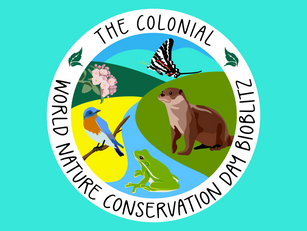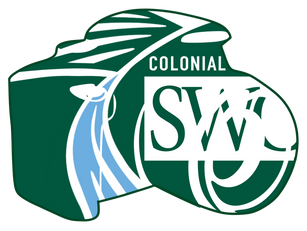top of page
Search


CSWCD Summer Newsletter Published
Summer 2024 CSWCD Newsletter

Amanda Whispell
Jun 28, 2024


Should I worry about periodical cicadas?
A short note explaining the life history of the amazing periodical cicadas. Find out if they pose any risks to you or to your garden.

Amanda Whispell
Apr 29, 2024


Teaching the next generation about native pollinators
A great day at the Williamsburg Farm Camp where we had the chance to talk to the students all about native pollinators!

Amanda Whispell
Apr 3, 2024


Chesapeake Bay Watershed to Benefit from $35 Million in Watershed Restoration Grants
NFWF announced $35 million in grant awards to support the restoration and conservation of the Chesapeake Bay watershed.
News Reprint
Apr 1, 2024


Solving your erosion problems
CSWCD staff can help landowners and producers with erosion issues by providing both cost-share funding and technical assistance.

Logan Ellis
Mar 25, 2024


New Partnerships Allow Expanded Access to Stormwater Funding
Over the past several years, we have developed three new partnerships with neighboring localities and soil and water conservation...

Robyn Woolsey
Mar 20, 2024


April Showers Bring Stormwater Practices
As sunny days grow nearer, so do spring's rainstorms, so it’s a good time to think about how to best manage stormwater on your property.

Emma Rich
Mar 18, 2024


First CSWCD Newsletter Published
The first issue of our new newsletter is filled with useful information that has been contributed by all of the CSWCD staff.

Amanda Whispell
Mar 15, 2024


Should I fertilize my grass this spring?
Many people fertilize their lawns in the spring. Is that a good idea? Generally, lawn fertilizers contain some ratio of nitrogen,...

Jim Wallace
Mar 15, 2024


Beneficial Bugs - Green Lacewings
This is the first article in a series I will be doing on beneficial bugs - the Green Lacewing

Amanda Whispell
Mar 12, 2024


Colonial World Nature Conservation Day BioBlitz 2024
Join us for the Colonial World Nature Conservation Day BioBlitz!
July 20, 2024
New Quarter Park
8:00 am - 12:00 pm

Amanda Whispell
Feb 21, 2024


Colonial SWCD Spring Outreach Event
Colonial Soil and Water Conservation District invites you to join us at the Quinton Community Center on February 26th for our Annual Spring

Logan Ellis
Feb 16, 2024


A Living Shoreline at Berkeley Plantation in Charles City
A living shoreline at Berkeley Plantation in Charles City, Virginia.

Amanda Whispell
Feb 8, 2024


New Partnership Brings Conservation Funding Opportunities to Essex, King and Queen, and King William County Residents
A new effort undertaken by two Soil and Water Conservation Districts can provide financial support to landowners dealing with stormwater...

Robyn Woolsey
Feb 5, 2024


CSWCD Annual Report - Fiscal Year 2023
The Colonial Soil and Water Conservation District Annual Report is available on the CSWCD website

Amanda Whispell
Oct 5, 2023


4th Annual BugFest
A summary of our day at the 4th Annual Bugfest in September 2023.

Amanda Whispell
Oct 3, 2023


Colonial Photo Contest
The Colonial Soil and Water Conservation District’s (CSWCD) First Annual Photo Contest begins October 1, 2023, and ends November 30, 2023.

Amanda Whispell
Oct 2, 2023


4th Annual BugFest
Come visit us at BugFest the Saturday, 30 September.

Amanda Whispell
Sep 25, 2023


Super Turf Saturday
819/2023 - Turfgrass experts from Virginia Tech will provide presentations about lawn management, weed control and prevention, and more!

Amanda Whispell
Aug 3, 2023


Postponed: Colonial World Nature Conservation Day BioBlitz
In light of the temps forecasted for this weekend, and out of concern for volunteer & participant safety, we've postponed the BioBlitz.

Amanda Whispell
Jul 27, 2023


Colonial World Nature Conservation Day BioBlitz
Colonial SWCD is organizing a BioBlitz at York River State Park to celebrate World Nature Conservation Day on 29 July - don't miss it!

Amanda Whispell
Jul 6, 2023


Kicking off our Colonial Pollinator BioBlitz
First day of the Colonial Pollinator Week BioBlitz kicks of with a Butterfly Scavenger Hunt.

Amanda Whispell
Jun 19, 2023


Colonial Pollinator BioBlitz
Colonial Pollinator Week BioBlitz
19 - 25 June - Pollinator Week 2023

Amanda Whispell
Jun 7, 2023


Virginia State University's Farm Field Day
Come on out to Virginia State University's Farmer Field Day at their research farm on June 14th.

Amanda Whispell
Jun 7, 2023
bottom of page
